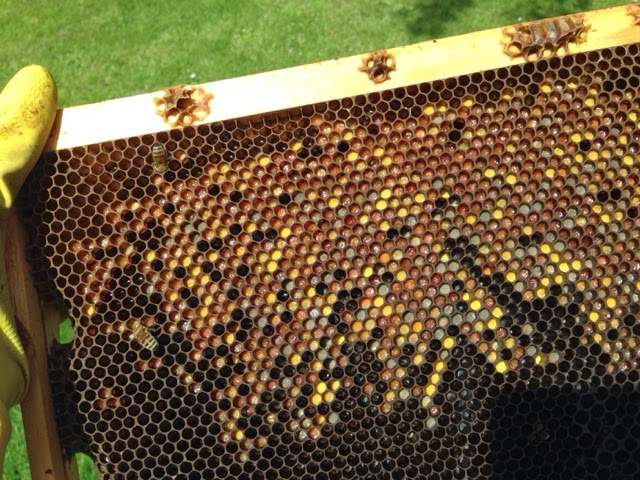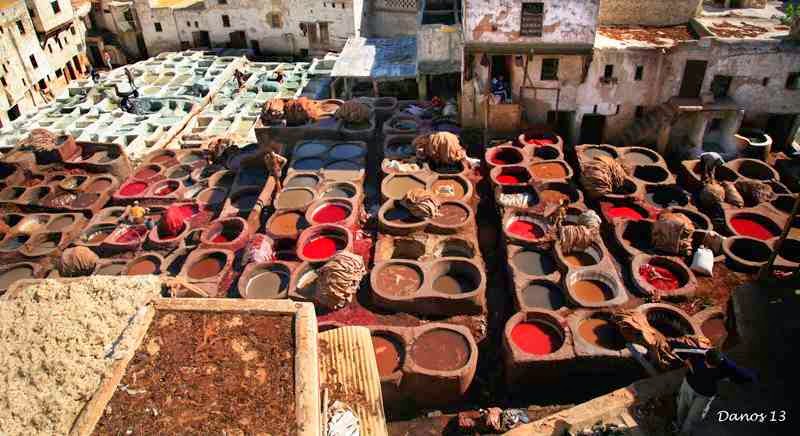
 |
| The amazing variety of different coloured pollens collected by my bees reminds me of the leather souq in Fez – the oldest tannery in the world |
The great thing about night shifts is you have plenty of time during the day to inspect bees. On my last inspection I checked the Nucleus hive and the Old hive…
Inspection: Nucleus Hive
Last time, I was relieved to find a few eggs so I was very happy that the colony was ‘queen right’ (had a queen).
This time, I saw 2 whole frames with eggs laid individually in each cell. They look like tiny grains of rice and take some practice to spot. The key thing is getting the angle of the frame right so that you get the light shining directly into the eggs. Anyway, in terms of stores there was hardly any honey. I thought about putting a frame feeder in but at this time if year with so many flowers I think it’s better for bees to feed naturally. So I got 1 frame full of honey from Old hive with its bees and placed it in the nucleus hive. I thought the bees might fight each other but they just eyed each other and carried on. If I were to combine two complete colonies that would be different – could result in warfare? We’ll look at how that’s done some time.
Inspection: Old Hive
Last time, you may recall I was in the process of transferring bees from a commercial brood box I bought into my national brood box. The hive had been arranged from bottom to top with a commercial brood box, queen excluder, a national brood box, queen excluder, and super at the top. This arrangement was necessary as I thought the queen was still in the commercial but couldn’t guarantee it. So I wanted to make sure wherever she was, whether in the commercial or national brood box, she was isolated.
This time, I opened the hive and found the national brood box (which was sitting on top of the commercial brood box) had sealed brood and no eggs (suggesting that the queen had previously been there but was no longer present). I therefore knew she must be in the commercial brood box (underneath the national brood box). The issue was that I needed to get her into the right box i.e. my national brood box. So I used a simple method to ensure the queen was transferred into my national box. First, I put the national brood box at the bottom of the hive. Second, I individually shook all the bees from the commercial frames into the national brood box (hoping the queen was also shaken in). So the hive orientation from bottom to top was national brood box, queen excluder, commercial brood box, queen excluder, super. The reason for keeping the commercial box as part of the hive is to allow brood there to develop and hatch; also as a back up just in case the queen was accidentally left in the commercial brood box. Next time, we’ll see if the queen definitely made it to the national brood box. The process described is much easier if you can find the queen and manually transfer her but it’s not always possible to find her so the shaking method is quick and easy.
During my inspection I saw the amazing variety of different coloured pollens the bees were bringing in. No wonder honey tastes so good and has so many health benefits. In Dr Beekeeper’s Superfoods series coming soon we’ll explore the health benefits of hive products like pollen in more detail.
